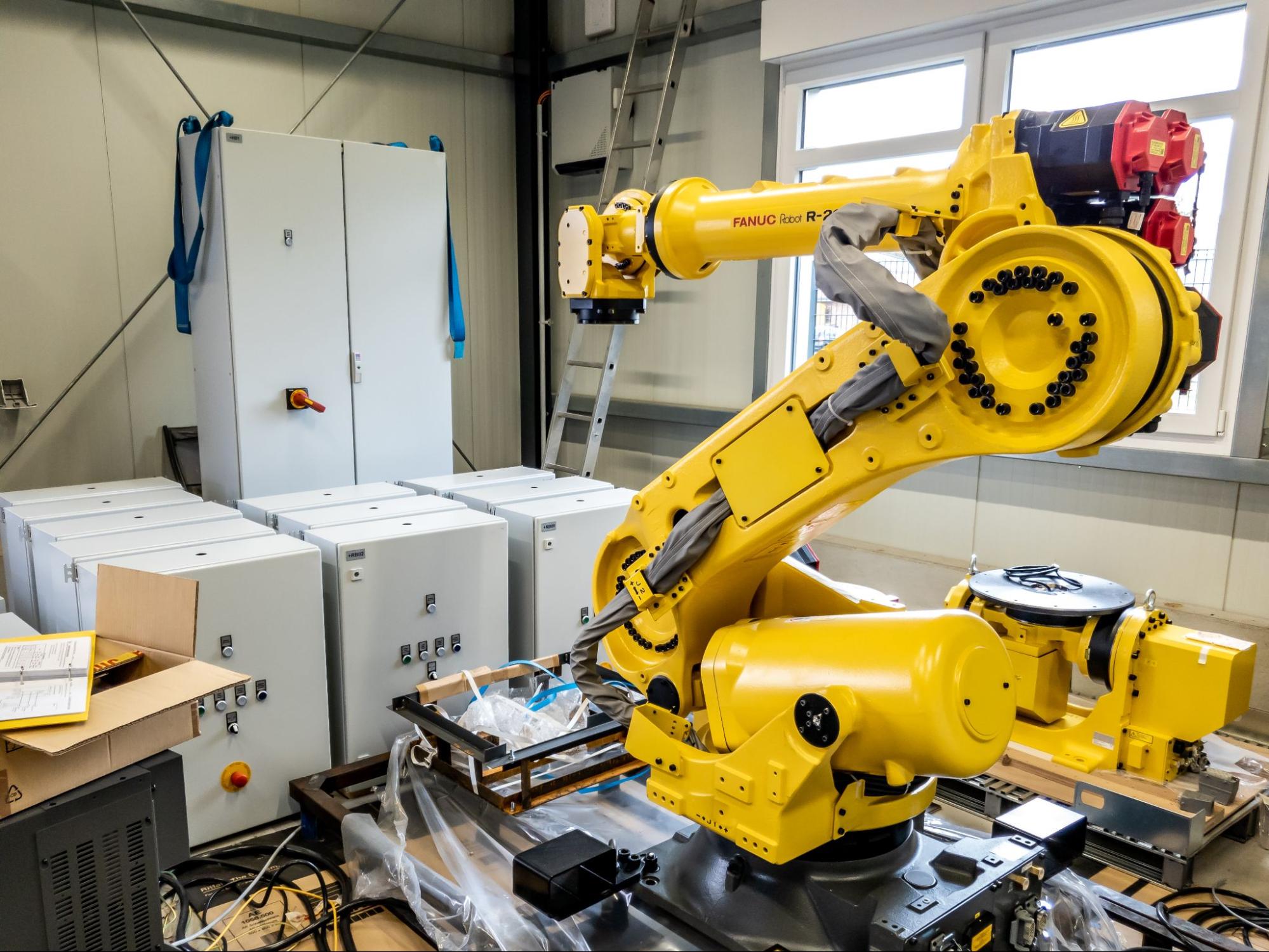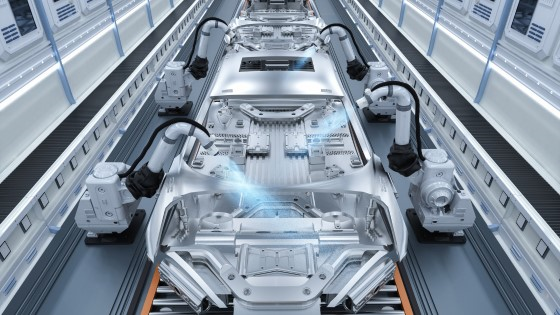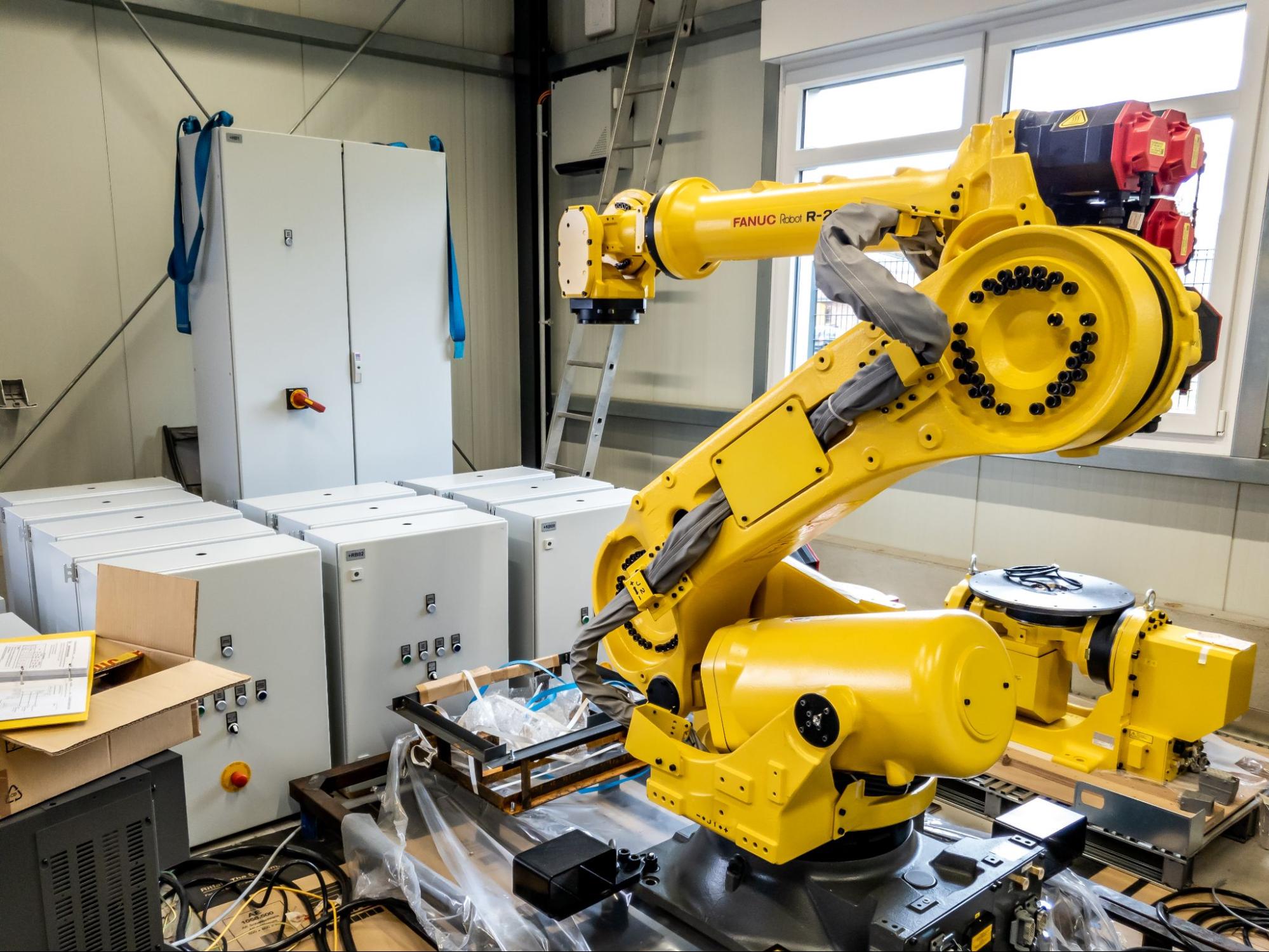
In the era of Industry 4.0, robotics has emerged as a transformative force, revolutionizing operations across a multitude of sectors. Among the myriad applications of this technology, painting robots have carved out a unique niche, enhancing efficiency and precision in painting and coating applications.
This article delves into the world of painting robots, exploring their role, significance, and the advantages they bring to the table.
The Role of Painting Robots in Different Industries
Painting robots have found their place in a variety of industries, with their application largely driven by the need for consistency, speed, and precision. Predominantly, they are employed in the automotive industry, where they apply uniform coats of paint to vehicles, ensuring a flawless finish that is hard to achieve manually.

Similarly, in the aerospace sector, robotic painting is used to apply specialized coatings to aircraft components, a task that demands a high level of accuracy and consistency.
Larry Marino, technical specialist at FANUC America corporation has this to say about their P350iA paint robot, “The P350iA Paint Robot actually has the highest kilogram payload of a Class 1 Division 1 hazardous environment robot at 45 kg. Boeing has two of these in their facility…performing sanding, solvent spray and prepping the fuselage for painting.”
This P350iA Paint Robot is just one example of how far painting robots have come since the technology first rolled out. For airplane manufacturers, they are a multi-tasking powerhouse automating multiple steps in the airplane painting process that allows them to:
- Use less solvents and paint materials
- Speed up painting times
- Reduce safety risk of hazardous painting materials
Beyond these applications, painting robots are also utilized in the manufacturing sector, particularly in the production of consumer goods. From applying protective coatings to electronic devices to painting furniture, these robots are versatile in handling different types of coatings, including water-based paints, powder coatings, and even specialty coatings like corrosion-resistant or fire-retardant paints.
Do More, Do it More Repeatably: Advantages of Using Painting Robots
The use of painting robots brings a host of advantages. Chief among them is the uniformity of coating. Unlike manual painting, where inconsistencies can occur, painting robots ensure a uniform application of paint, leading to a higher-quality finish. This uniformity also extends to the thickness of the paint layer, which the robot can precisely control.
Moreover, painting robots can work continuously without fatigue, leading to higher productivity. They also reduce the exposure of human workers to potentially harmful fumes and chemicals, enhancing workplace safety. Lastly, the precision of painting robots minimizes paint waste, making the process more cost-effective and environmentally friendly.
Real-World Examples of Painting Robots
In the realm of industrial automation, painting robots are no longer a novelty but a necessity. Numerous manufacturers have developed integrated painting solutions that are not only efficient but also ensure high-quality surface finishing. Let's delve into some of the top painting robots designed specifically for professional-grade surface finishing.
1. Improving Efficiency, Minimizing Waste in the Automotive Sector
Painting robots, such as ABB's award-winning PixelPaint technology, are a game-changer in automotive painting automation. Equipped with a pair of 6-axis robots and innovative inkjet painting heads, it eliminates the need for conventional spray valves, masking, and de-masking, thereby streamlining the painting process.
The robot's ability to apply two-tone or customized paint designs in a single pass further boosts efficiency. Moreover, it addresses the persistent issue of overspray, which typically results in a 20%-30% paint loss.
The PixelPaint robot ensures that 100% of the coating is applied to the intended surface, enabling manufacturers to accurately estimate the required paint supplies and optimize resource utilization.
2. Self-Learning Robots for Powder Coating
Powder coating, accounting for over 15% of the world's finishes, is a prevalent choice in steel fabrication due to its durability and resistance to severe weather and corrosion. DeGeest Steel Works recognized the need for automation to alleviate bottlenecks in their processes, particularly in their painting department.
To overcome the complexity of programming most automation solutions, the company worked with Lesta, an Italian robotics brand offering self-learning machines that emulate human movements. These robots significantly reduce the need for extensive offline programming. Instead, they are trained through a disengaged learning mode where the robotic arms become weightless, allowing a human operator to guide them in the desired painting motion.
This process, completed in mere seconds, equips the robots for independent operation, enhancing efficiency without requiring constant human intervention.
3. Aviation Paint Stripping Made Safer
Aircraft painting is a crucial aspect of plane maintenance, necessitated by fading colors or rebranding efforts. However, the process involves depainting - the removal of existing paint layers using chemical or abrasive methods, which pose environmental and health hazards.
A Dutch company introduced a robotic solution that not only mitigates these risks but also reduces the turnaround time for these tasks by up to 60%. The robot, extending over 70 feet, is equipped with a base featuring multidirectional wheels for easy maneuverability within a hangar.
Its advanced color recognition and control systems ensure precision in paint removal from metal and composite surfaces.
More articles you may like:
The Backbone of Painting Robots: Spatial Awareness and Collision Detection
Two critical aspects to consider in the operation of industrial robotic painting systems are spatial awareness and collision detection.
Spatial awareness in a painting robot is akin to the perception of space in humans. It allows the robot to understand its position in the work envelope relative to the objects around it, enabling it to paint with precision while avoiding unnecessary overlaps or gaps.
Collision detection, on the other hand, is a safety feature that prevents the robot from causing damage to itself or the object it is painting. By detecting potential obstacles in its path, the robot can adjust its movements accordingly, ensuring a smooth and uninterrupted painting process.
Both these features are integral to the efficient operation of painting robots, and any prospective builder must pay heed to their implementation.
Spatial Awareness and Collision Detection Are the Backbone of Your Robotics Painting Software
Save hundreds of development hours and get your application to market faster with Spatial’s SDKs
Learn More
Maximize the Capabilities of Your Painting Robots While Reducing Time to Market
Spatial's SDKs can provide a robust foundation for the development of painting robots, enhancing their collision detection capabilities and overall efficiency. Here's how:
- Increase Productivity and Reduce Risk: AGM, an application graphics manager, supports synchronization between object and visualization and decreases project risk considerably among a host of other capabilities that enable application developers to save time and effort when developing an application.
- Enhanced Collision Detection: CGM Modeler can be used to detect potential collisions between the robot and its environment.
- Better Visualization: HOOPS Visualize is useful for monitoring the robot's progress and identifying any areas that may have been missed. They can create a visual representation of the robot's path and the area it has painted.
- Interoperability: 3D InterOp ensures that the robot can effectively communicate with other systems and software. This can be particularly useful in a production environment where the robot needs to work in tandem with other machines and systems.
|
Find out how Spatial’s technologies can supercharge your software, reduce development times, and maximize your time-in-market. Spatial brings over 35 years of experience and supports 400+ customers worldwide. |
|



